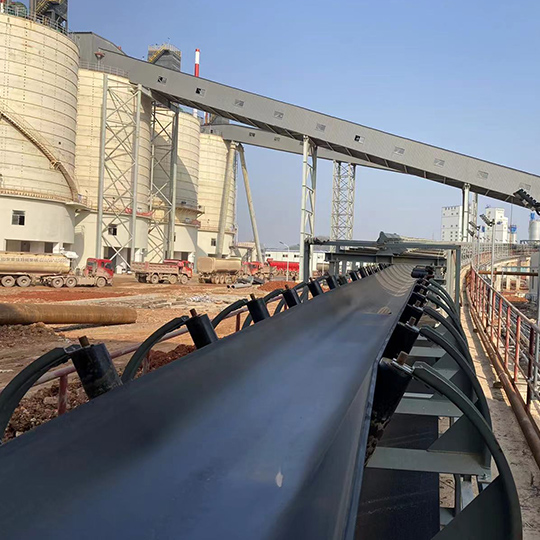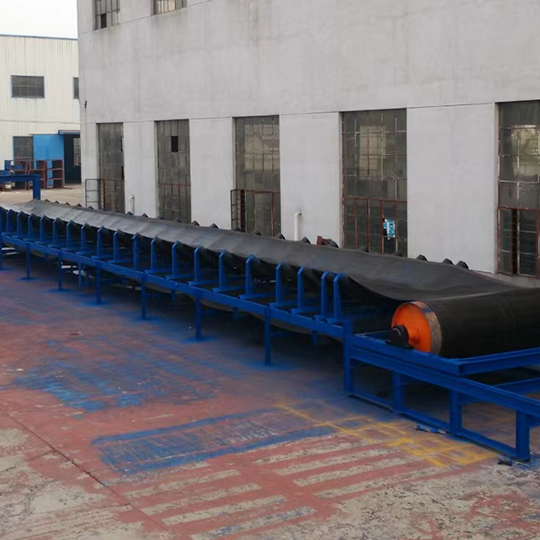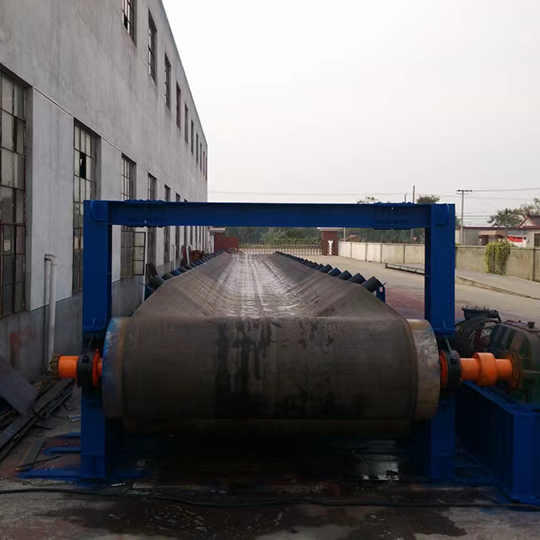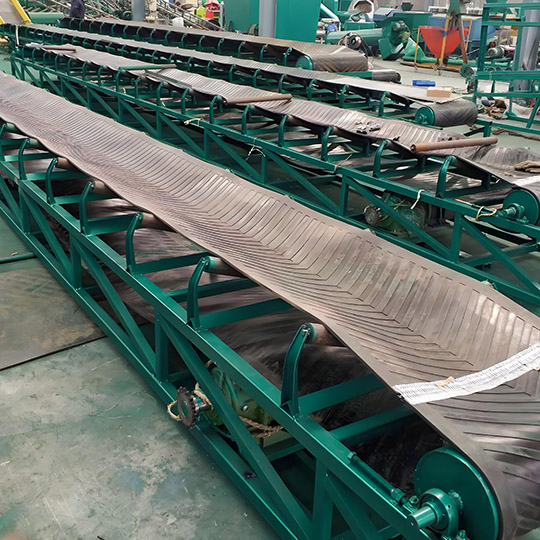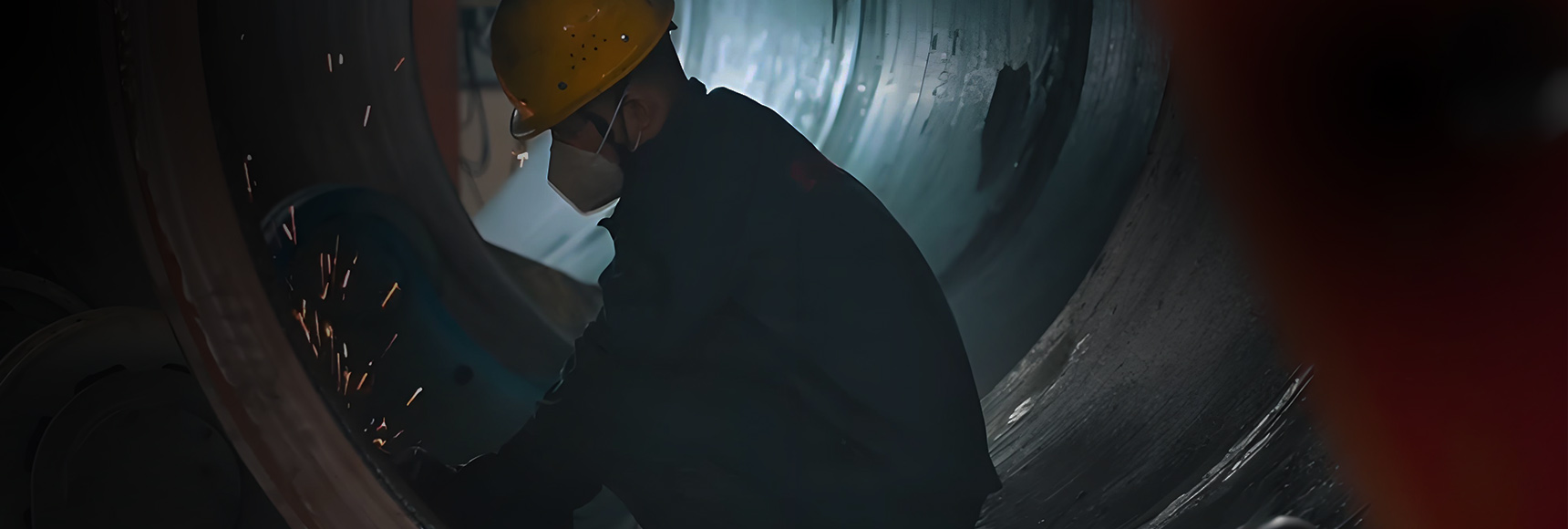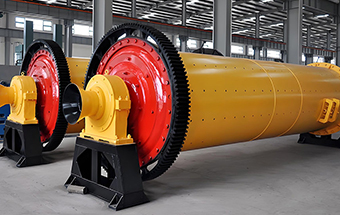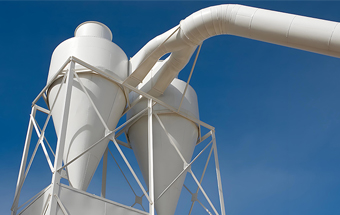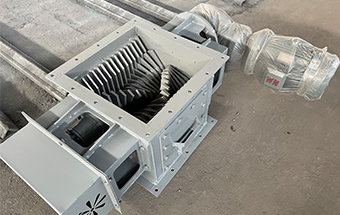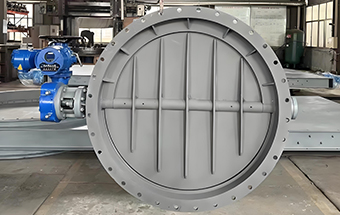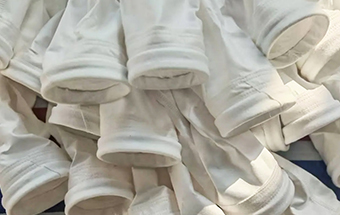Belt Conveyor
- Long-distance continuous transport
- High-capacity material handling
- Reliable automated operation
- Modular extendable design
- Low-maintenance cost-effective
- Multi-industry versatile application
Industry-Leading Belt Conveyor Manufacturer
As a leading belt conveyor manufacturer, DARKO brings over 10 years of expertise in industrial conveying systems. Our ISO-certified equipment, exported to 30+ countries, delivers reliable solutions for coal, metallurgy, chemical, power, and cement applications – combining high efficiency with intelligent control features.
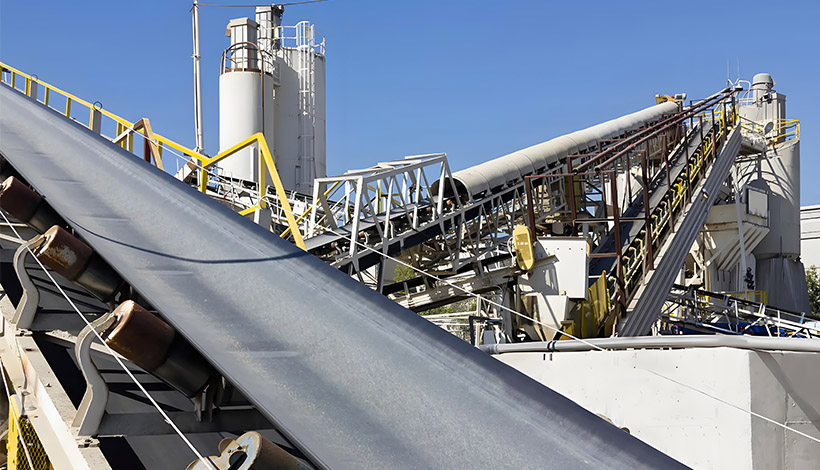
Belt Conveyor Working Principle
A belt conveyor primarily consists of two end pulleys with a continuous loop belt. The drive pulley (powered by a motor) moves the belt, while the bend pulley redirects it – both creating friction for material transport.
Materials are loaded at one end and carried by the moving belt to discharge at the opposite end, with the drive pulley typically positioned at the output side for maximum traction efficiency.
Advantages of Belt Conveyors
Belt conveyors deliver unmatched efficiency, reliability and versatility for modern material handling needs across industries.

Belt conveyors enable uninterrupted material handling, significantly improving production efficiency.

Designed with strong loading capacity, ideal for large-scale bulk materials and packaged goods.

Single-system conveying distance can extend several kilometers, meeting long-range transport needs.

More energy-efficient than other transport equipment, reducing operational costs.

Modular design ensures low failure rates and easy maintenance.

Can be arranged horizontally, inclined, or curved to suit various site conditions.

Easily integrated with centralized control and smart management systems.

Widely used in mining, power generation, building materials, ports, and more.
Our Service Process
As one of China’s leading conveyor belt suppliers, we provide high-quality, durable belt conveyor solutions for various industries.Our comprehensive service ensures seamless material handling solutions with reliable performance and responsive technical support.
We analyze your production requirements to provide customized equipment selection ensuring perfect system compatibility.
Our senior engineers create personalized solutions with optimized system configuration based on your specifications.
Detailed pricing covering equipment, installation, shipping and after-sales service with no hidden costs.
Strict quality control at our ISO-certified factory guarantees reliable equipment performance.
Dedicated logistics team ensures on-time delivery with complete installation guidance and training.
24/7 technical support with scheduled maintenance alerts and fast spare parts delivery.
What is a Conveyor Belt?
A conveyor belt is a friction-driven machine designed for continuous material transportation. It consists of a frame, belt, idlers, rollers, tensioning device, and drive unit, forming a complete material handling system from the feeding point to the discharge point. Capable of transporting both bulk materials and packaged goods, it not only handles pure material transfer but also integrates with industrial processes to create synchronized production lines.
Also known as a belt conveyor, it operates on friction-driven principles and is ideal for transporting powders, granules, small lumps, and bagged materials with low abrasiveness—such as coal, gravel, sand, cement, fertilizer, and grain. Suitable for ambient temperatures ranging from -20°C to +40°C, it can handle materials below 60°C. The conveyor length and configuration are customizable, with options for motorized rollers or traditional drive assemblies.
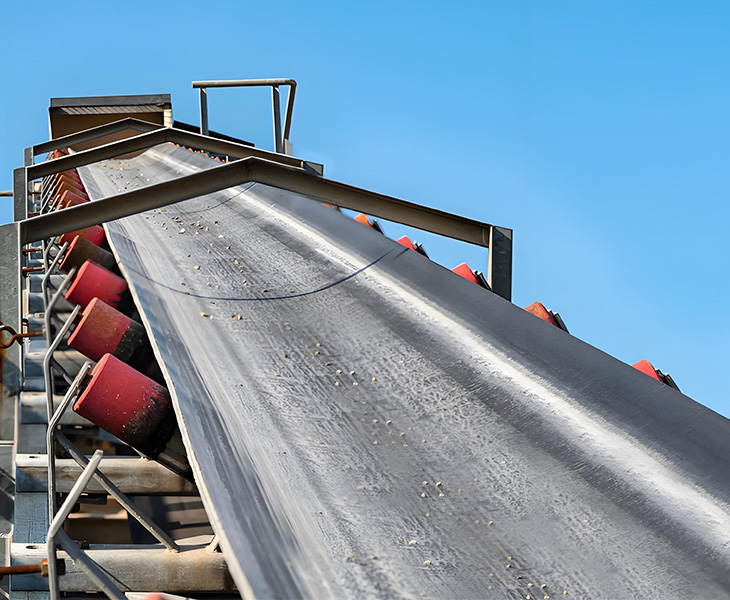
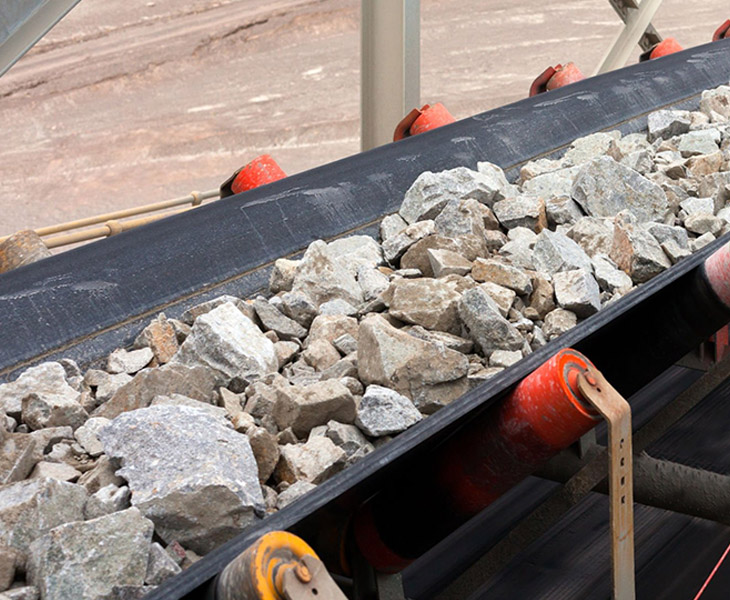
Different Types of Belt Conveyors
Belt conveyors come in various types to suit different industrial needs. General fixed belt conveyors are commonly used in coal mines for horizontal or slightly inclined transport (up to 18°), with widths ranging from 800mm to 1600mm. Light-duty fixed conveyors handle lighter loads over shorter distances (<100m). Steel cord belt conveyors use reinforced cables for high-strength, long-distance transport (several kilometers). Telescopic belt conveyors feature adjustable lengths for mining or tunneling. Large-incline and vertical conveyors handle steep slopes, while horizontal curve conveyors navigate around obstacles. Air-supported conveyors reduce friction with an air cushion, and tubular belt conveyors enclose materials to prevent spillage. Reversible conveyors allow bidirectional transport for flexible unloading. Each type serves specific operational requirements.
Own Factory, High Quality Manufacturing Power
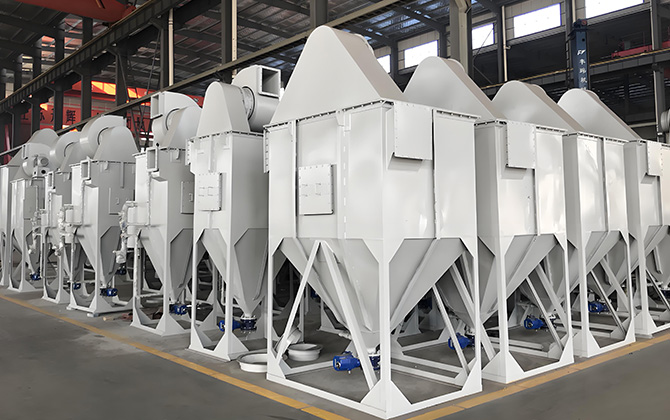
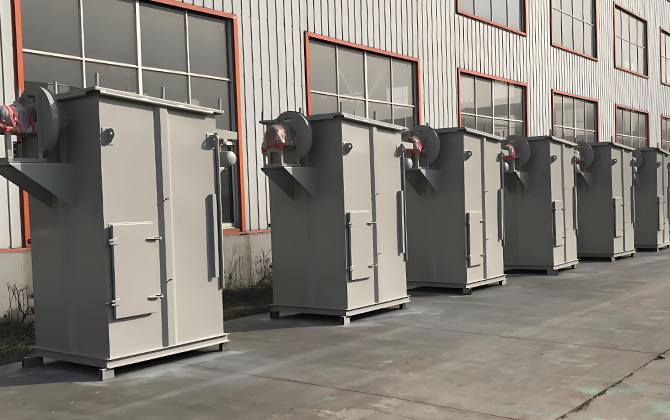
As a professional cement equipment manufacturer with 10 years of industry experience, Darko combines innovative engineering with reliable production capabilities. Our ISO-certified facility produces 400+ dust collection systems and 450+ conveying systems annually, serving 500+ global clients with complete solutions from cement silos to dust control systems.
Backed by patented technologies and an experienced R&D team, we specialize in customized, non-standard designs to meet diverse project requirements. Equipped with advanced manufacturing facilities and strict quality control, we ensure every product meets the highest international standards while delivering cost-effective, environmentally friendly solutions for cement plants and industrial applications worldwide.
Related Product
As a leading manufacturer of material handling systems, we provide a complete range of conveying solutions to optimize your production line. In addition to belt conveyors, explore our high-performance conveying equipment:
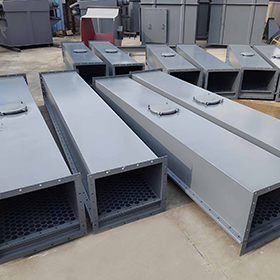
Pneumatic conveying solution for fine dry powders (e.g., cement, fly ash). Zero moving parts, energy-efficient airflow design with minimal maintenance requirements.
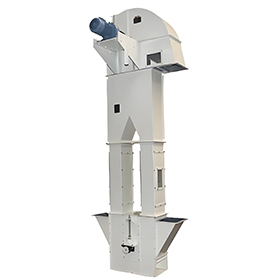
Specifically designed for combustible dust environments with integrated explosion-proof devices and pressure relief systems, compliant with ATEX standards. Perfect for chemical, pharmaceutical, and metalworking industries.
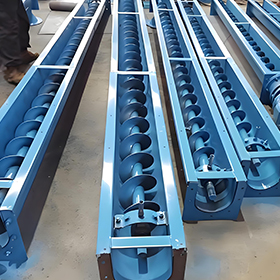
Enclosed structure effectively prevents dust and leakage, specially designed for powders and small particles. Can be integrated into automated conveying systems, widely used in chemical and food processing industries.
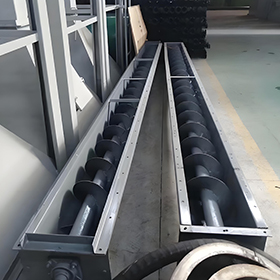
Heavy-duty version for larger-capacity conveying of granular or semi-fluid materials. Features enhanced torque resistance and wear-resistant coatings for cement, fertilizer, and wastewater treatment plants.
Professional Customized Conveying System Solutions
Precision-engineered material handling systems tailored to your production requirements
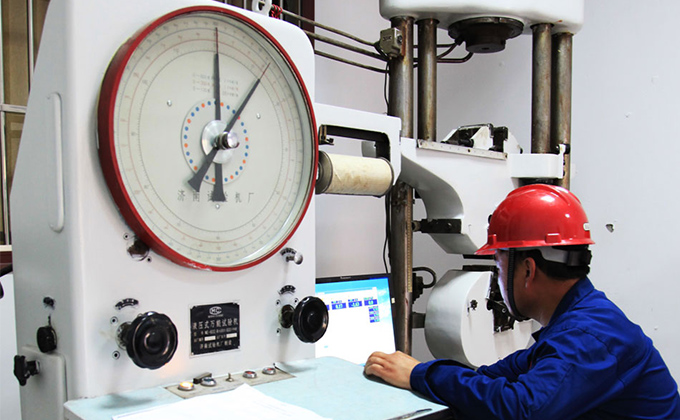
We provide complete standard and custom conveying systems tailored to your material handling requirements. Our engineering team designs reliable bucket elevators, belt conveyors, screw conveyors and pneumatic systems using premium components and smart configurations. All equipment is manufactured in-house with strict quality control to ensure seamless integration with your operations. We optimize each system for your specific materials, capacity needs and facility layout to deliver maximum efficiency and longevity.
Our conveying systems come with comprehensive worldwide service and maintenance support. From installation supervision to operator training and 24/7 technical assistance, we ensure your equipment maintains peak performance. We offer remote monitoring options, preventive maintenance programs and genuine spare parts to minimize downtime. Our durable, wear-resistant designs coupled with responsive after-sales service guarantee smooth material handling operations throughout your system’s lifecycle.
More about Belt Conveyor
By fully understanding the relevant technical parameters and structural technology of the belt conveyor, you will have a clearer understanding of the performance advantages and application value of the equipment.
- Technical Specifications
- Characteristics of Drive Principle
- Technical Advantages
| Parameter Category | Technical Indicator | Typical Range/Options | Notes |
|---|---|---|---|
| Capacity | Rated throughput | 50-5000 t/h | Calculated by bulk density |
| Conveying Distance | Single-unit length | 20-5000 m | Multi-unit connectable |
| Belt Speed | Adjustable range | 0.8-5.0 m/s | Variable frequency drive optional |
| Belt Width | Standard widths | 500-2400 mm | Complies with GB/T 7984 |
| Incline Angle | Maximum operating angle | 0-28° (standard belt) 0-35° (cleated belt) |
Material-dependent |
| Drive Power | Motor power | 5.5-630 kW | Load/distance calculated |
| Pulley Diameter | Drive/bend pulleys | Φ320-Φ1500 mm | Dynamic balanced design |
| Idler Type | Carrying/return idlers | 35°-45° troughing Impact idlers |
Flame-resistant options available |
| Belt Material | Cover types | Rubber (EP/NN), PVC, steel cord | Heat/abrasion/rip-resistant |
| Ambient Temp. | Operating range | -20℃ ~ +50℃ | Custom high/low-temp designs |
| Protection Rating | Motor IP rating | IP55/IP65 | Dust/waterproof |
(1) The traction force of a belt conveyor is transmitted through friction between the drive pulley and the belt. Therefore, the belt must be tensioned using a tensioning device to ensure sufficient initial tension at the separation point of the drive pulley.
(2) The belt moves along with the load on idlers. Serving as both the traction mechanism and carrying structure, the belt and load maintain relative stillness, eliminating frictional resistance between them. With rolling bearings inside the idlers, the belt and idlers interact through rolling friction, significantly reducing operational resistance. This lowers power consumption and extends conveying distance.
For a belt conveyor, the traction capacity depends on:
-
Belt tension
-
Wrap angle around the drive pulley
-
Friction coefficient between the belt and drive pulley
To prevent belt slippage and ensure smooth operation, practical measures should be taken based on specific conditions. Traction capacity can be enhanced through the following approaches:
(1) Increase Tension Force (Initial Tension):
During operation, belt elongation reduces traction. Properly adjusting the tensioning device to increase belt tension improves traction.
(2) Increase Friction Coefficient:
Protect the drive pulley’s lining (e.g., wood or rubber) to maintain high friction. Additionally, minimize water or coal spillage to prevent coefficient reduction.
(3) Increase Wrap Angle:
For underground belt conveyors operating under harsh conditions and requiring high traction, dual-pulley drives are often used to maximize the wrap angle.
1. Reliable Continuous Operation
Belt conveyors are widely adopted in critical continuous operations such as coal handling in power plants, bulk material transport in steel/cement plants, and ship loading/unloading at ports—where unexpected downtime would cause massive losses. They can operate 24/7 with minimal interruptions.
2. Energy-Efficient Performance
With almost no relative movement between materials and the belt, our conveyors achieve:
-
Ultra-low resistance (only 1/3 to 1/5 of scraper conveyors’ energy consumption)
-
Minimal material degradation or breakage
-
Higher throughput with lower operational costs
3. Flexible Routing Configurations
-
Adaptable length: From 3m to 10km+
-
Versatile installation: Fits narrow tunnels or elevated passages above hazardous areas
-
Modular design: Easily extended or reconfigured
4. Multi-Point Loading/Unloading
-
Precision feeding: Accepts materials from single/multiple points (e.g., coal bunkers in processing plants)
-
Smart discharge: Options include:
• Head pulley dumping
• Plow trippers
• Movable shuttle cars for targeted discharge at any point
5. Advanced Material Handling
-
Stockpile reclaiming: Underground tunnel systems blend different materials directly from storage piles
-
Process integration: Synchronizes with screening, weighing, or sorting systems for turnkey solutions
Belt conveyor capacity depends on belt speed (m/s), belt width (mm), and material density (kg/m³). The basic formula is:
Capacity (tons/hour) = Belt Speed (m/s) × Belt Width (m) × Material Load (kg/m³) × 3.6
For precise calculations, consider factors like inclination angle, belt type, and material flowability.
-
Belt Conveyor: Best for bulk materials (coal, grain, sand), slopes, and long-distance transport.
-
Roller Conveyor: Ideal for heavy unit loads (boxes, pallets) with flat surfaces.
Choose belt conveyors for loose materials and roller conveyors for rigid items.
Key factors:
✔ Material Type (powder, granules, abrasive?)
✔ Capacity (tons/hour)
✔ Belt Width & Speed (depends on load size)
✔ Environment (food-grade, mining, high temperature?)
✔ Special Needs (inclined, portable, or enclosed?)
Related Product
-
High-efficiency grinding with adjustable fineness, ideal for cement production.
-
Efficient industrial dust collection with simple, low-maintenance design.
-
-
-
Belt Conveyor Troubleshooting Guide
Common Issues & Solutions
Belt Misalignment
Key solutions focus on installation precision and maintenance:
-
Adjust Carrier Rollers – Move the roller forward in the direction of belt deviation.
-
Install Self-Aligning Idlers – Effective for short or reversible conveyors (avoid long conveyors to prevent belt wear).
-
Correct Drive/Return Pulley Position – Ensure pulleys are perpendicular to the belt centerline; adjust bearing positions accordingly.
-
Tension Adjustment – Keep take-up pulleys level (gravity/hydraulic systems must maintain perpendicular alignment).
-
Optimize Loading Points – Minimize material impact by increasing transfer height and using properly sized chutes (2/3 belt width).
-
Reversible Conveyors – Adjust one direction at a time, prioritizing pulley alignment.
Material Spillage
-
Transfer Points – Check chute seals and skirt rubber; avoid overloading.
-
Concave Belt Sag – Use larger curve radii in design to prevent suspension.
-
Misalignment-Induced Spillage – Correct belt tracking first.
Key longevity strategies:
✔ Scheduled Maintenance: Inspect rollers/pulleys biweekly; replace worn parts promptly
✔ Proper Tensioning: Maintain belt tension within ±10% of manufacturer’s specification
✔ Cleaning Protocol: Remove material residues daily (especially adhesive/corrosive substances)
✔ Misalignment Prevention: Install auto-tracking devices to minimize edge wear
✔ Environmental Protection: Use anti-rust materials in humid areas; add heat-resistant liners for high-temperature applications
Essential food industry standards:
✓ Material Certification: Belts must comply with FDA/USDA/EC1935 food-contact regulations
✓ Hygienic Design: Dead-zone-free structure with detachable cleaning (stainless steel recommended)
✓ Contamination Control: White/light-colored belts for impurity detection; lead-free pigments mandatory
✓ Cleaning Compatibility: Withstand pressure washing (80°C) and food-grade sanitizers
✓ Specialized Needs: Oil-resistant belts for meat processing; heat-resistant (≤150°C) for bakeries
Compliance: Must meet both HACCP and ISO22000 standards




